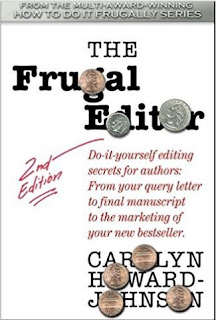 |
| At worst, a house unkept cannot be so distressing as a life unlived. |
Have you taken an honest look at your work habits lately? I’m one to talk. That’s why I didn’t clean up my office before I took the photos for this post. If I’m working on a project non-stop, I’ve been known to walk around the mess on the floor of my office, place my notebook ON TOP of the pile on my desk, and keep working until the project is done. THEN I clean up. I wouldn’t recommend this method. Though to be sure, some chaos feeds my process. I do try to keep the chaos to a minimum, because I believe that to be productive one needs to be organized.
Tips of the Trade: My Method
I’ve found that I need to write OR organize. I can’t do both at the same time. Hence the mess I sometimes get into while working on a writing project.
My Tips:
• Clean up your office.
• Put papers away.
• Collect various projects in folders and file the folders in a metal incline sorter or the like.
• Label everything.
• Keep your computer files sorted and easy to find.
Got a problem with feeling torn between household projects and errands vs writing? We all do.
• Treat writing time the same way you do appointments and errands in your calendar. Designate a certain number of hours a day/week to work on writing, write this in your calendar, and stick to your plan.
• Take part of your project and/or paper and pen/pencil everywhere you go. It’s amazing what you can get done in small snatches of time.
• If I’m especially stressed to get household chores done, I set my manual kitchen timer for one hour. I run around and get as much housework done as possible. I do the same for writing time. The ticking clock reminds me to stay motivated and keep going. I do that as long as I can throughout the day until I simply must stop and finish either the household chores or writing for the day.
• Try getting up super early. I struggle with this but when my alarm goes off at 5:00am, if I make myself GET RIGHT UP, I’m good. Those days I allow myself to take a short nap. 😊 Though I’m an early riser, if you’re a night owl, the same principle holds true.
• At the end of a writing session, write yourself a note with where you need to start working the next day. This helps me get started faster than searching around for where I left off. I do the same thing for running my household. This helps me get a lot done in shorter amounts of time than if I didn’t plan ahead.
• Add a good measure of throw-it-all-to-the-wind chaos to your work. I suppose being too organized might tend to be boring. I wouldn’t know because as much as I try, I never truly reach that pinnacle of true organization!
• BONUS: Allow yourself to feel satisfied with the work accomplished each day. Feeling satisfied with the work accomplished each day has actually re-energized all aspects of my life, which in turn, as we writers know only too well, adds the fuel that feeds our writing!
Your take: I hope in some way your own creative process has been helped by this post. Please leave a comment with your thoughts. We would love to hear from you.
 |
| I couldn't let you go without seeing the rest of my office. Clean up time anyone?! |
Linda Wilson lives in Albuquerque, New Mexico.
She is a classical pianist and loves to go to the gym. But what Linda loves
most is to make up stories and connect with her readers. Visit
Linda at https://www.lindawilsonauthor.com. Find
Linda’s books at https://www.amazon.com/author/lindawilsonchildrensauthor.





.jpg)
.JPG)












